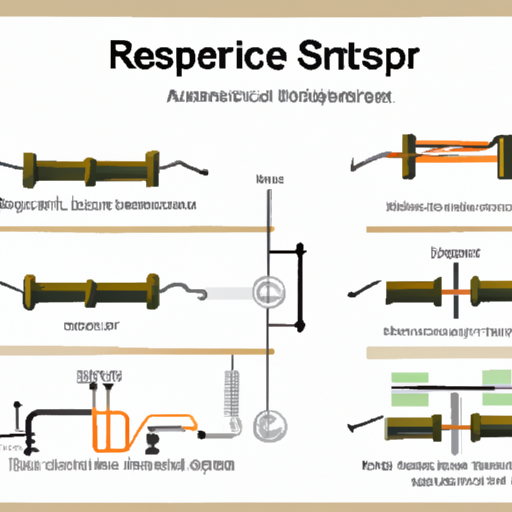Resistors are one of the most commonly used electronic components in the world. They are used in a wide range of applications, from simple circuits to complex electronic devices. The production process for resistors is a crucial step in ensuring their quality and reliability. In this article, we will explore the mainstream resistor wiring production process, from the initial design phase to the final testing and packaging.

The production process for resistors begins with the design phase. During this stage, engineers and designers work together to create a blueprint for the resistor. This includes determining the desired resistance value, power rating, and tolerance level. The design phase also involves selecting the appropriate materials for the resistor, such as carbon film, metal film, or wirewound.
Once the design is finalized, it is sent to the production team for manufacturing. The production team will then begin the process of creating the resistor.
Material Selection
The next step in the resistor production process is material selection. The type of material used in a resistor will depend on its intended application and performance requirements. For example, carbon film resistors are commonly used in low-power applications, while wirewound resistors are used in high-power applications.
The production team will carefully select the appropriate materials for the resistor based on the design specifications. This may involve sourcing materials from suppliers or manufacturing them in-house.
Manufacturing Process
The manufacturing process for resistors typically involves several key steps:
1. Cutting and forming: The first step in the manufacturing process is cutting and forming the resistor material into the desired shape and size. This may involve using automated machinery to cut and shape the material to the required dimensions.
2. Coating: Once the resistor material has been cut and formed, it is coated with a thin layer of resistive material. This coating helps to regulate the flow of current through the resistor and provides the desired resistance value.
3. Printing: After the resistor material has been coated, it is printed with the appropriate resistance value, tolerance level, and other relevant information. This printing process is typically done using automated machinery to ensure accuracy and consistency.
4. Testing: Once the resistor has been printed, it undergoes rigorous testing to ensure that it meets the required specifications. This may involve testing the resistance value, power rating, and tolerance level of the resistor.
5. Packaging: Once the resistor has passed all quality control tests, it is packaged and prepared for shipment. The packaging process may involve placing the resistor in a protective casing or wrapping it in a protective material to prevent damage during transit.
Quality Control
Quality control is a critical aspect of the resistor production process. Throughout each stage of manufacturing, the resistor is carefully inspected and tested to ensure that it meets the required specifications. This may involve using automated testing equipment to check the resistance value, power rating, and tolerance level of the resistor.
In addition to automated testing, resistors may also undergo manual inspection by trained technicians to ensure that they meet the highest quality standards. Any resistors that do not meet the required specifications are rejected and sent back for rework or disposal.
Final Testing and Packaging
Once the resistors have passed all quality control tests, they are ready for final testing and packaging. During this stage, the resistors are subjected to a series of final tests to ensure that they are functioning correctly and meet the required specifications.
After passing final testing, the resistors are packaged and prepared for shipment. The packaging process may involve placing the resistors in trays, tubes, or reels, depending on the intended application. The resistors are then labeled with the appropriate information, such as the resistance value, tolerance level, and part number.
Conclusion
The production process for resistors is a complex and intricate process that requires careful attention to detail and precision. From the initial design phase to the final testing and packaging, each step in the production process plays a crucial role in ensuring the quality and reliability of the resistors.
By following a systematic approach to resistor production, manufacturers can produce high-quality resistors that meet the performance requirements of a wide range of electronic applications. With proper material selection, manufacturing techniques, and quality control measures, manufacturers can produce resistors that are reliable, durable, and consistent in their performance.